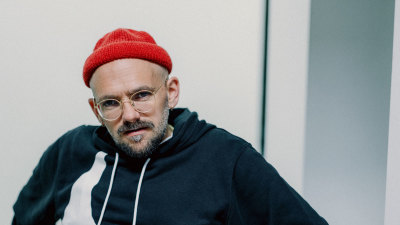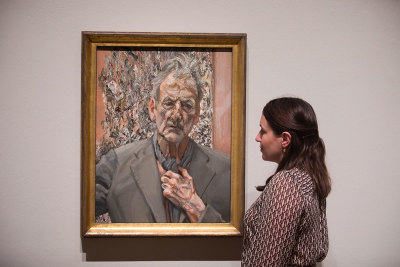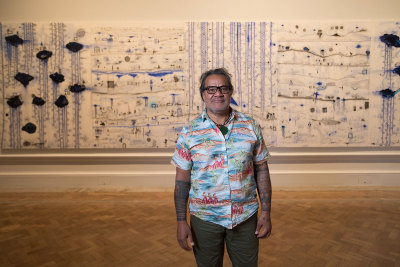My studio life: Allen Jones RA
My studio life: Allen Jones RA
By Amy Macpherson
Published 1 January 2015
We visited Allen Jones RA in his Oxfordshire studio, where he talked about his transition from painting to sculpture, and about painting Kate Moss.
-
From the early 1960s, Allen Jones RA’s international reputation was established as a painter, printmaker and sculptor. Over the past 40 years his work has been exhibited around the world in both solo and group exhibitions. There have been three major retrospectives of his work. The first at the Walker Art Gallery, Liverpool, travelling to the Serpentine Gallery, London and to four venues in Germany. The second at the ICA, London, which travelled to the Fruit Market, Edinburgh and Arnolfini, Bristol, and the third at the Barbican, London, which was subsequently toured worldwide by the British Council.
We caught up with him in the run-up to his major retrospective at the Royal Academy in 2014.
-

A place in the country
“My Oxfordshire studio was designed by a good friend of mine, the architect Piers Gough, who coincidentally is a fellow Royal Academician. In order to get planning permission, the building had to look like a barn so that it fitted in with the local environment”
© Eamonn McCabe
-

Vantage point
“Having this north-facing window very high up provides a good light for painting. In those days the land surrounding us was just open sheep meadows, so I thought I’d best take advantage of the view. That’s why the platform is up there, notionally for meditation and for the odd cup of tea”
© Eamonn McCabe
-

Keeping the light in
“It turns out it’s very hard to design a curtain for a triangular window. These are sails: a guy came from a shipyard where they build yachts, and he abseiled up there to fix all the hooks. The sheeting is totally opaque. We’re in the countryside so it’s nice not to be shedding a huge amount of light into the environment”
© Eamonn McCabe
-

What happens in the studio
“Painting. Even the sculptures, which are made somewhere else, come to me for painting. That’s what I am anyway, really – a painter. A painter who sculpts.”
© Eamonn McCabe
-

Material challenges
“That wood sculpture occupies the size of a reasonable wardrobe, and the wood can’t go out of doors. It was very labour intensive to make that, with all the curving surfaces. I pretty quickly graduated to using steel or fibreglass – it’s easier to make the forms, and if they can go out of doors it increases the amount of people who might be able to own one!”
© Eamonn McCabe
-

From painting to sculpture
“I spent a lot of the ‘60s developing a very stylised, very volumetric language for describing the figure in paint. Then I thought, if I’m trying to make it look three-dimensional, why not just make it three-dimensional? That produced the furniture sculptures, and after that the implications took off in several directions”
© Eamonn McCabe
-

Storyboards
“When I’m drawing, I tend to rule out a set of rectangles in the proportions I’ve chosen to work on. It means I can play with an idea and develop it. Sometimes they get worked up and become interesting little drawings, but remain illustrations and never become a painting. If one of them has ever become a painting, you can tell because I’ve squared it up (in a grid) in order to enlarge it”
© Eamonn McCabe
-

Framing the moment
“I quite like this photographer (bottom right)… I’ve done some paintings where he’s in the corner, because it’s a nice metaphor for what the artist is doing”
© Eamonn McCabe
-

A model subject
“The painting on the left is of Kate Moss. I had a commission to paint her, and I ended up doing three paintings and a couple of sculptures”
© Eamonn McCabe
-

Magazine clippings
“If you’re interested in the subject, you know, it’s irresistible to cut these things out. Some people collect pots because they’re potters… I’m interested in anatomy”
© Eamonn McCabe
-

Tools of the trade
“I heard a long time ago that Cezanne had something like 30 different greens on his palette. Nothing is new…. I don’t have 30 greens but I’m up in the 20s on some of the colours”
© Eamonn McCabe
-

Brushwork
So many people think that I use an airbrush, but no – if you’ve been doing it long enough it’s just about having the right variety of brushes. I’ve been using this one for years. I don’t have an assistant… The only reason I can see for having an assistant is that it would be nice to have someone clean your brushes! It just is such a drag"
© Eamonn McCabe
-
See other interviews with artists and architects from our ‘My studio life’ series.















